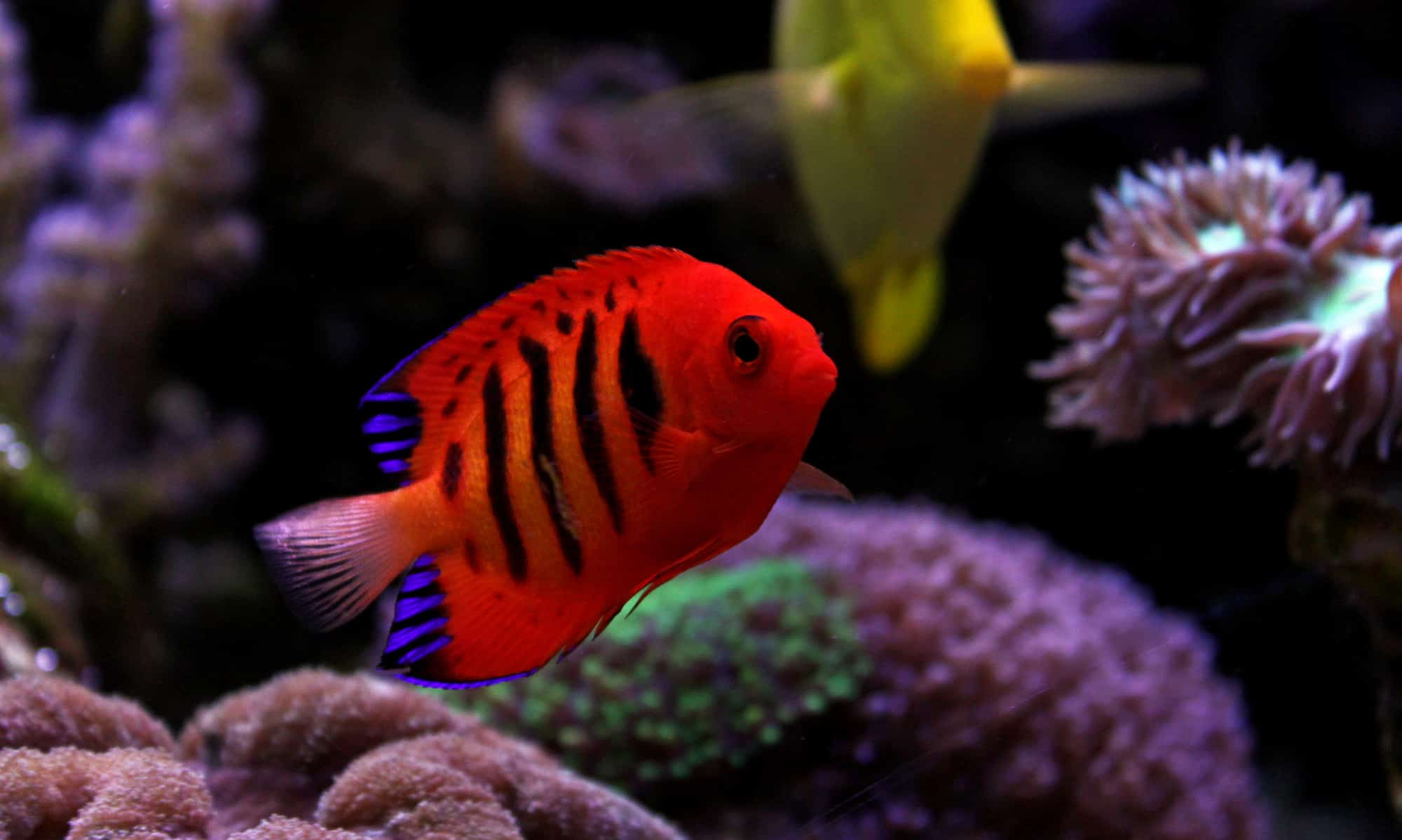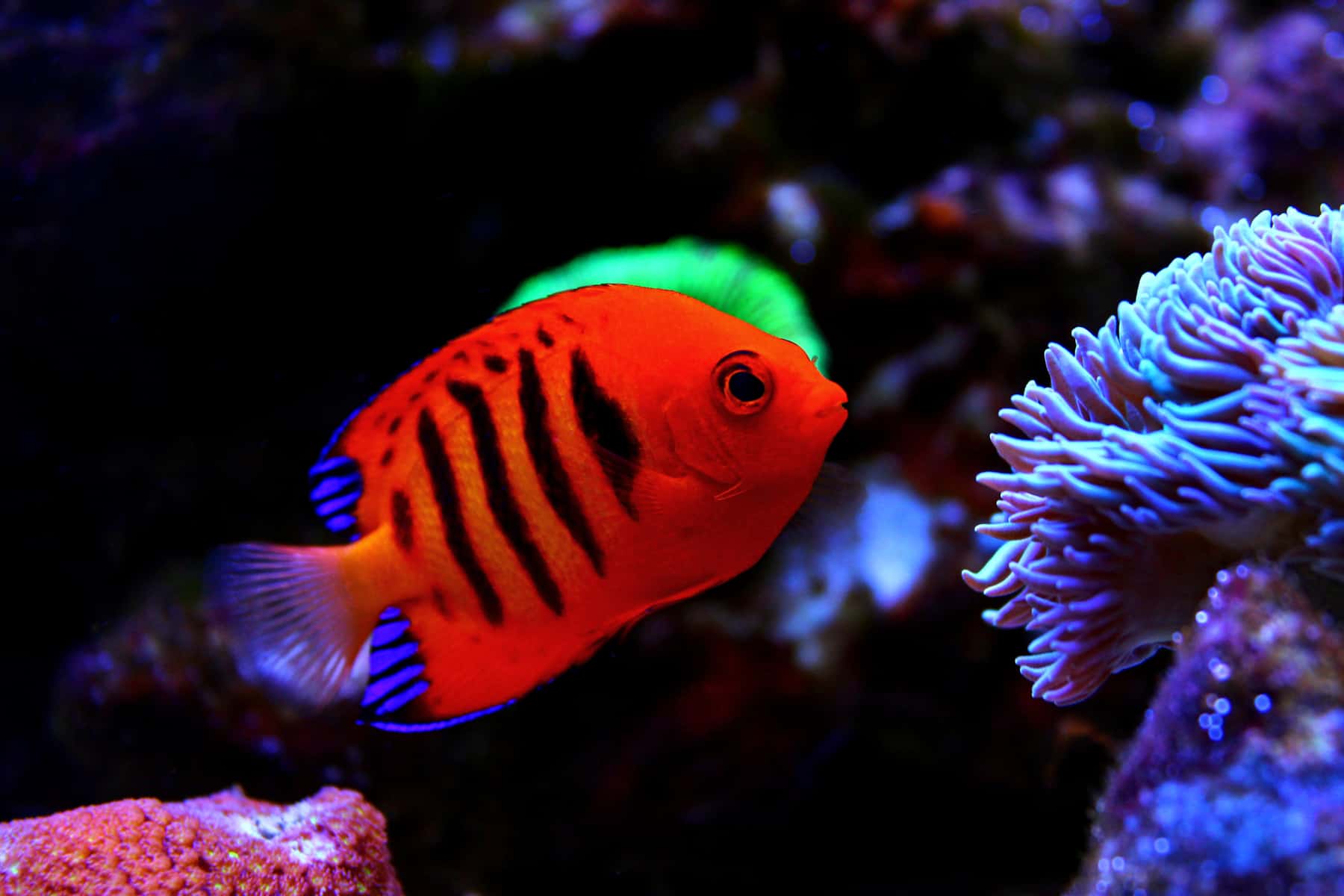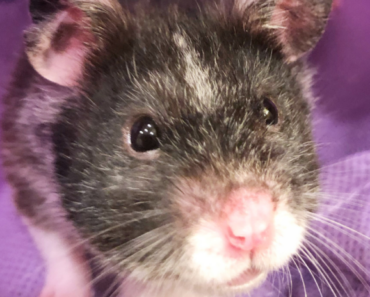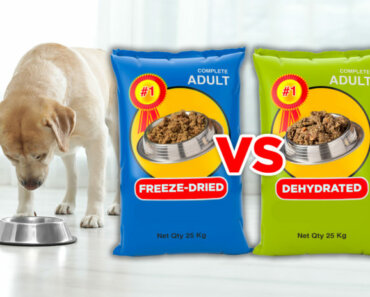The Flame Angelfish is one of the most popular dwarf angels among novice and experienced hobbyists. These brightly colored fish are relatively easy to keep and make a wonderful addition to the marine or reef aquarium. Flame Angelfish can be very useful in cleaning the tank, as they can control certain species of diatom algae.
Like a lot of marine fish, Flame Angels are quite expensive to purchase so, we’ve put together this comprehensive guide on how to care for these beautiful fish so that your Centropyge Loricula will thrive and achieve its full lifespan.
Before we get into the care guide, let’s learn more about these stunning fish and their origins.
What is a Flame Angelfish?
The Flame Angelfish is a marine fish belonging to the Pomacanthidae family of fishes.
The Flame Angel’s scientific name is Centropyge Loriculus, although it is also known by the common names, Flaming Angelfish, Flame Angel, and Japanese Pygmy Angelfish.
These fish were first discovered by Gunther in 1874 in the warm waters of the Society Islands in the Pacific, but they have also been spotted in tropical waters right across the Western Pacific, including the Ducie, Marquesas, and the Hawaiian Islands, Belau, the Great Barrier Reef, and the Pitcairn Islands.
Flame Angels live in harems of between three and seven fish. The species favors stony coral reefs and clear lagoons and can be found gathering on the outer reef slopes at depths of between 16 and 82 feet, especially around dense stands of finger coral.
The fish primarily feed on algae, although they do also eat small animals that they find living among the algae.
Captive specimens have a life expectancy of between five and seven years, sometimes more.
Appearance
Angelfish Centropyge has the characteristic oval body and rounded fins of all dwarf angels and is one of the most brightly colored of all the pygmy angels. In general, male specimens are larger than females, growing to a maximum size of around six inches.
The fish has an orange-red body with contrasting bold, black vertical stripes. The back edge of the anal and dorsal fins have deep, electric blue accents, making this a truly striking fish.
Interestingly, the Flame Angelfish’s markings and coloration are strongly influenced by their location. Individuals that are found in the Christmas Islands and the Marshall Islands are typically more intensely red in color as opposed to orange, and they have thicker black barring on the body. Fish from the Christmas Islands are usually more red/orange in color with thinner vertical black bars on the body.
Individuals from Cebu are red/orange with a tint of yellow between blurred black bars, whereas fish from Tahiti are deep, blood-red with almost no yellow tint. These Flame Angels are rarely collected and therefore command a very high price when they are offered for sale.
In Hawaiian waters, the Angelfish Centropyge are larger and have a more vibrant red coloration than those found in the Indo-Pacific region, which are more orange-red, and those from the Marquesas do not have vertical black bars.
All variations of the species have fin edges that are a deep, blueish-purple color that’s almost fluorescent.

Care of the Flame Angelfish
In this section of our guide, we give you the low-down on how to care for your beautiful Flame Angelfish.
Note that Centropyge Loriculus is considered to be reef safe provided that it receives sufficient quantities of food and is fed the correct diet.
Tank size and water parameters
Although Flame Angelfish are not quite as sensitive as other species of angels, they still need good water quality to thrive.
The tank size for a single specimen must be at least 30 gallons. Generally, if the tank is too small, aggressive, and territorial behavior may be triggered, as the fish will deem it necessary to defend the available algae from competitors. A more suitable tank size would be at least 55 gallons, and a tank of 75 to 100 gallons is necessary if you want to keep a pair of Flame Angels.
The water temperature should be kept between 720 and 820 Fahrenheit. pH levels need to be between 8.1 and 8.4, and the salinity of sg 1.020 to 1.025 is desirable.
You should carry out 30% water changes each month, although 15% every two weeks is better for keeping nitrates low.
Centropyge Loricula tends to hang out at the bottom to the middle area of the tank and prefers fairly strong water movement.
Decoration and lighting
Flame Angels enjoy plenty of rocks, rubble areas on the tank bottom, or live rock where they can pick at natural foods.
These fish can be quite shy, and they do appreciate having plenty of crevices and caves in which to hide and feel secure.
The lighting within the aquarium should be bright enough to encourage algae growth on the live rock.
Diet and nutrition
Wild Centropyge loriculus are omnivores, eating mostly algae and the tiny creatures that they find living there.
In captivity, the fish are grazers, eating algae that are growing on surfaces in the tank. However, you do need to offer the fish some other proteins, including:
- dried marine algae
- angelfish preparations
- Mysis shrimp
- shaved shrimp
- spirulina-enriched foods
- flakes and pellets formulated for algae eaters
You should feed the fish several times each day; even they have natural foods to graze on. Juvenile specimens should receive four servings of food every day. The fish’s diet should consist primarily of algae with a small proportion of meaty foods.
Tankmates
Flame Angelfish are semi-aggressive fish.
These fish can be kept with invertebrates and corals, although they may nibble on large polypod stony corals, tridacnid clam mantles, zoanthids, and some soft coral polyps. However, provided you give the fish a suitable diet, they won’t feel the need to graze on the coral, which limits the damage they can cause in a reef tank.
Centropyge loriculus is happiest when kept in small schools or in mated pairs. Provided there is one single male in a school; the group will remain harmonious. However, males will fight, sometimes to the death, so it’s safest to keep just one.
When it comes to choosing tankmates for these pretty fish, other semi-aggressive saltwater fish species, such as other varieties of dwarf angels, clownfish, large wrasses, anthias, tangs, and clownfish are all suitable candidates, although the tank should be well over 100 gallons if other dwarf angels are to be introduced.
More aggressive species can be considered, as long as the Flame Angel is the bigger fish.
Breeding
Angelfish Centropyge are not easy to breed in captivity, although there have been some reported successes in rearing young.
Flame Angelfish spawn in a similar way to other dwarf angelfish in that they are broadcast spawners, rising to the top of the water column and releasing sperm and eggs simultaneously as the daylight fades. In captivity, spawning is more likely if you use a deep tank and a stable lighting schedule. Replicate natural dusk by timing half your aquarium lights to go out, and then an hour later, the remaining lights to go out, and make that timing consistent every day.
The eggs should hatch in a day or so. After hatching, the tiny fry can be fed microscopic algae.
Diseases
The best way to prevent disease in your tank is by keeping the environment clean and the water parameters suitable for the residents. Stress leaves fish with a weakened immune system and vulnerable to disease, so the happier the Centropyge Loricula is, the less likely it will be to become sick.
Before introducing any new fish or invertebrates to your main display tank, you should quarantine them first in a separate tank for at least 14 days. If the fish has any illnesses, they should become evident during that time, and you can treat the fish in isolation, rather than risking the health of your whole community.
Flame Angelfish can suffer the same diseases as other marine fish species. These illnesses can be divided into two main areas; parasites, fungal, and bacterial diseases, or physical injuries.
Protozoan and parasitic diseases
All dwarf angelfish species are prone to parasites such as Marine Velvet Disease and White Spot Disease, which are two of the most common diseases.
White Spot Disease (Marine Ich)
White Spot Disease is caused by a parasite that attaches itself to the fish’s skin, causing irritation. You’ll notice affected fish flicking or rubbing their bodies on the substrate or against decorations and structures within the tank.
Also, the fish will develop a rash of tiny white spots all over the fins, gills, tail, and body. Usually, the dots vanish within a few days as the parasite’s lifecycle progresses, only to reappear in far greater numbers. Fish left untreated can suffocate, as the parasites block the gills so that the fish cannot breathe.
Marine Velvet
Marine Velvet is also caused by a swimming parasite that attaches to the fish’s body.
Symptoms include a dusting of light brown to yellowish “dust” across the fish’s body. The sick fish may also show respiratory distress, clamped fins, and cloudy eyes. Also, affected fish may glance off the substrate or tank decorations due to the irritation caused by the parasite.
The fish’s appetite will be poor, and it may begin to lose weight.
Treatment of parasites
The treatment for both these external parasites is essentially the same.
Start by raising the water temperature to around 820 Fahrenheit. That will interfere with the parasite’s lifecycle, preventing it from attaching itself to the fish. So, any free-swimming parasites will effectively be killed off before they can attack the fish.
Also, you should dose the tank with a suitable over-the-counter preparation that you can buy from good fish stores.
It can be very difficult to treat parasites in marine or reef tanks that contain live rock. Many treatments contain formalin, copper, or quinine, all of which are harmful to other marine creatures. However, you can use metronidazole as a safe and effective treatment for several types of anaerobic and protozoan bacterial diseases.
Metronidazole works by stopping the parasite’s growth, and that, combined with the increased water temperature is usually sufficient to end an outbreak in your tank.

Bacterial diseases
Flame Angelfish are also susceptible to fungal and bacterial diseases.
Often, these conditions arise because of damage to the fish that’s caused by an injury or parasitic disease. One particularly nasty bacterial disease is caused by Vibrio bacteria. Vibrio bacteria ultimately cause potentially fatal conditions including, Popeye, dropsy, red streaks, or bleeding in the skin. This is an extremely fast-acting bacterial disease that can kill a fish within a couple of days.
Treatment of bacterial diseases
One very effective method of killing bacterial infections is to place your fish in a freshwater dip.
Make sure that the pH and water temperature are the same as that of the marine tank and immerse the fish in the water for up to 15 minutes if no signs of stress are observed. Also, you can use an over-the-counter product to treat the whole tank.
Physical injuries
Sometimes, fish can pick up minor injuries as a result of being bullied or nipped by a tankmate or during spawning. The main danger of a physical injury is that a bacterial infection may result.
If your Centropyge Loricula sustains an injury, it’s sensible to treat the tank with an antibacterial product as a precaution.
Availability
Most species of dwarf angelfish, including Centropyge Loriculus, are fairly widely available in good fish stores that stock marines. Also, there are many online suppliers that can source fish for you if you can’t find one locally.
Like a lot of the marine fish that can be kept in captivity, Flame Angelfish are quite expensive. You can expect to pay around $60 for a relatively small juvenile specimen, and the price generally rises as the fish become bigger. Remember that you will need to add shipping costs to the price of your fish if you buy from an online supplier.
FAQ
In this section of our guide, we answer some of the most frequently asked questions by people who are considering buying a Flame Angelfish.
Q: Are Flame Angelfish Aggressive?
A: Flame Angelfish are generally peaceful fish provided that they are kept in a large aquarium that’s not overcrowded. You can keep a small school of Flame Angels as long as you include only one male in the group. Males can become aggressive toward each other and toward other algae eating fish if kept in a tank that is too small.
Q: What do Flame Angelfish eat?
A: Flame Angelfish are omnivores, grazing on certain types of algae and eating the tiny animals that live within the algae. In the aquarium, Flame Angels can be fed Mysis shrimp, shaved shrimp, spirulina-enriched foods, as well as flakes and pellets formulated for algae eaters.
Q: Is a Flame Angel reef safe?
A: Flame Angelfish are generally considered to be reef safe.
Q: What size tank does a Flame Angel need?
A: For a single Centropyge Loriculus, you will need a tank of at least 30 gallons. If you want to keep a pair of Flame Angelfish, you need a tank of 75 to 100 gallons, preferably larger.
In conclusion
Flame Angelfish are stunning creatures that add a great splash of color to any reef or marine tank.
These fish are relatively straightforward to care for, provided that you provide the correct water parameters and feed the fish the correct diet. If you intend to keep a few tankmates with your Flame Angel, you will be pleased to hear that they are generally peaceful fish. However, it’s best not to keep two males in the same setup, as they may fight, especially if the tank is small.

























